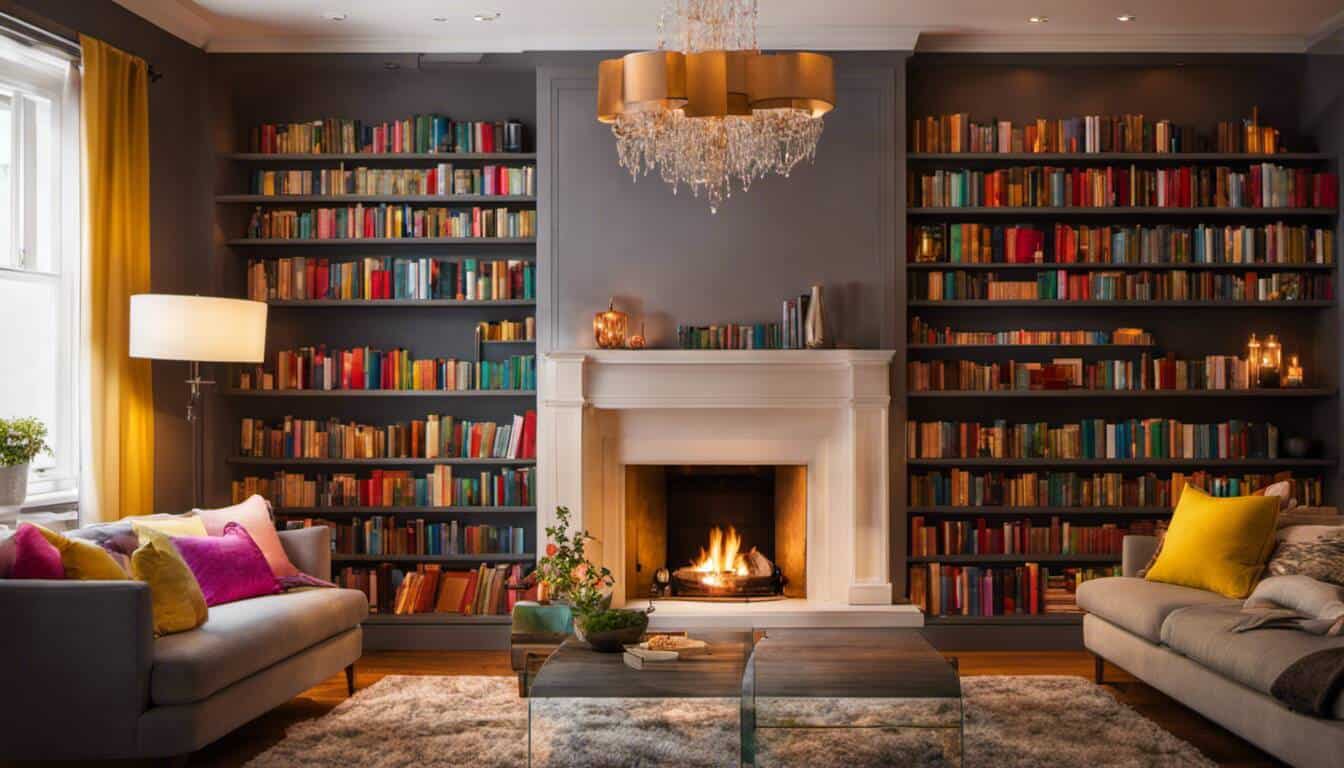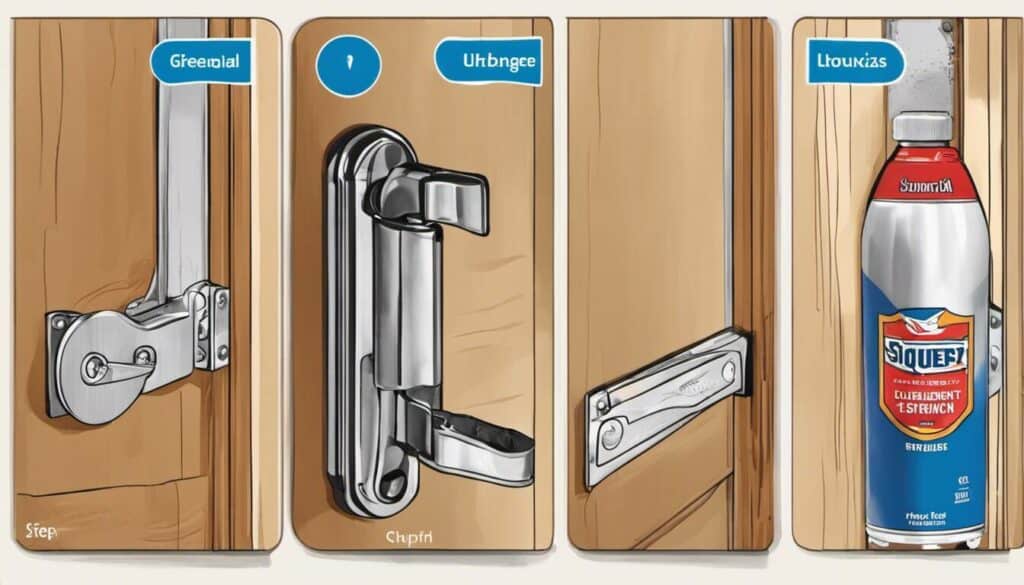Are you tired of staring at the same old fireplace that has lost its charm? Are you seeking a home décor transformation challenge that’s both refreshing and budget-friendly? Prepare to be inspired! As we embark on an audacious journey of an unlikely fireplace conversion, this DIY home improvement story will transform your ambiguity into confidence. Get ready to discover how an unused and unloved fireplace can turn into your room’s centrepiece with just a bit of creativity, some essential tools, and no professional help!
“My Unlikely Fireplace Conversion” is a personal account written by one of our contributors detailing their experience converting a traditional wood-burning fireplace to a gas fireplace. The article covers their thought process, challenges faced during the conversion process, and the final outcome.

“Converting a traditional fireplace into an eco-friendly one could be a complex task for the untrained, but with proper guidance and respect for safety measures, it’s definitely achievable. It’s crucial to remember to maintain an efficient ventilation system for a healthier indoor air quality during and after the project.”
Stefen Kipling, Fireplace Conversion Specialist
Preparing for the Fireplace Conversion
Converting a fireplace is an exciting project that can transform the look and feel of your home. However, before embarking on this endeavor, it’s crucial to make thorough preparations. This includes assessing the space, determining clearance requirements, and researching the necessary tools and materials. By taking these preparatory steps, you’ll be able to ensure a smooth and successful conversion process.
It’s essential to begin by evaluating the condition of your existing fireplace. Look for any signs of damage or deterioration that may require repairs before proceeding with the conversion. Additionally, consider the size and layout of your space to determine if any modifications or adjustments are necessary.
For example, if your current fireplace has a mantel or decorative trim that will interfere with the new wood-burner installation, you may need to remove or modify these features. Remember that clearances are typically measured from the stove body itself rather than the surround’s trim.
Another crucial aspect of preparation is checking for flue clearance. The flue refers to the chimney or venting system through which smoke and gases exit your home when using a fireplace. It’s vital to ensure there is sufficient clearance within your existing flue system to accommodate a wood-burner.
- According to the United States Environmental Protection Agency, an average household can save over 1,000 gallons of fuel annually by switching from an open wood-burning fireplace to a wood burning insert.
- A study published in the Journal of Building and Environment found that properly installed fireplace inserts can improve heating efficiency by up to 70% compared with traditional fireplaces.
- The Hearth, Patio & Barbecue Association reports that nearly half (47%) of homeowners have a gas fireplace and 10% converted from wood-burning fireplaces to gas due to convenience and easy maintenance.
- Converting a fireplace is a great way to enhance your home’s aesthetics, but it requires thorough preparation. Start by evaluating the condition of your existing fireplace and assessing any necessary modifications. Check for clearance requirements, including flue clearance, to ensure a smooth and successful conversion process. Remember that clearances are measured from the stove body itself rather than the surround’s trim. Taking these steps will set you up for a successful installation.
Checking for Flue Clearance
To determine if your flue has adequate clearance for a wood-burning insert, careful assessment is required. Start by referring to the manual or specifications of the particular wood-burner you’re considering for installation. It should provide guidance on minimum clearance requirements specific to the appliance.
Keep in mind that different wood-burners may have varying clearance recommendations due to differences in design and construction. Therefore, it’s crucial to verify if your existing flue size and dimension align with the requirements of your chosen wood-burner.
If you’re unsure about whether your flue meets these specifications or need assistance in assessing its compatibility, it’s recommended to consult with a professional chimney sweep or fireplace technician. Their expertise can ensure proper evaluation and provide guidance on any necessary modifications or upgrades.
Once you have determined that your flue clearance meets the requirements, you can move forward in evaluating potential wood-burner options suitable for your fireplace conversion project.
Evaluating Potential Wood-Burner Options
When it came to converting my fireplace into a wood-burning stove, I knew that selecting the right option would be crucial. After all, the wood-burner would not only provide warmth but also become a centerpiece of my living space. So, I began evaluating the potential wood-burner options available to me.
As I researched different models and brands, I considered factors such as heating capacity, design aesthetics, durability, efficiency, installation costs, maintenance requirements, fuel consumption, and heat output. Taking into account the size of my room and desired heating range, I narrowed down my choices to the top ten wood stoves for 2023. These options included renowned brands like US Stove, Buck Stove, Cleveland Iron Works, Napoleon Timberwolf, Drolet HT3000, and more.
Ultimately, I selected the US Stove 900 Sq. Ft. Cast Iron Log Wood Stove. Not only did it have efficient heating capacity for up to 900 square feet, but its classic design added a touch of timeless charm to my home. This reliable and durable option offered efficient warmth while enhancing the overall aesthetics of my living space.
Exploring Design Ideas and Fireplace Decor
With the wood-burner option finalized, it was time to turn my attention to exploring design ideas and fireplace decor. I wanted to create a cozy and inviting atmosphere while preserving the charm of a traditional fireplace.
One option I considered was creating a stacked stone or brick surround that would give the wood-burner a rustic and natural look. The combination of natural materials with the warm glow of the fire would add a comforting ambiance to the room. Alternatively, I explored the possibility of installing an electric fireplace for a more modern and low-maintenance option.
Another idea that caught my attention was incorporating built-in shelves or cabinetry on either side of the fireplace. This would not only provide additional storage space but also allow me to display decorative items or family photos.
To enhance the overall design, I explored different mantel options. From reclaimed wood to sleek and modern designs, the choice of mantel played a significant role in tying together the entire aesthetic of the fireplace.
Lastly, I considered how to accessorize the fireplace area. Cozy rugs, plush seating, and decorative accents like candles or art pieces helped create a welcoming space that beckoned people to gather around and enjoy the warmth of the fire.
Working with an Existing Chimney
When embarking on a fireplace conversion, one of the key considerations is whether you have an existing chimney that can be utilized. Having an existing chimney not only saves you time and effort but can also add to the overall charm of your new wood stove installation. If you’re considering a more significant change, you might want to explore options to remove your gas fireplace and start fresh with a new design. Before moving forward, it’s crucial to inspect the chimney for any damage or blockages and ensure it meets the necessary safety requirements for a wood-burning appliance.
Once you’ve assessed the condition of your existing chimney and determined that it’s suitable for your wood stove installation, it’s time to delve into the process itself.
The Process of Installing a New Wood Stove
Installing a new wood stove may seem like a complex undertaking, but with careful planning and adherence to safety guidelines, it can be accomplished successfully. Here are the key steps involved in the installation process:
- Choosing the right location: Identify a suitable spot for your wood stove that complies with local building codes, clearances from combustible materials, and offers optimal efficiency in heating your home.
- Preparing the area: Clear out any obstructions or furniture around the installation site and protect your flooring with fire-resistant materials. Ensure proper ventilation within the room.
- Preparing the chimney: Clean out any debris or creosote buildup from your existing chimney and make sure it is structurally sound. Install a flue liner if necessary.
- Setting up hearth protection: Install a non-combustible hearth pad or build a masonry hearth that meets regulatory requirements. This ensures safety from potential floor damage caused by stray sparks or heat.
- Positioning and securing the stove: Place your wood stove on its designated spot, making sure it remains level and stable. Attach it securely to the floor or wall according to manufacturer instructions.
6 .Connecting and venting: Connect the stovepipe or flue collar to the stove and route it through the chimney. Ensure proper clearances and use appropriate sealing materials to prevent any leaks.
- Inspecting and testing: Once the installation is complete, conduct a thorough inspection of the wood stove, chimney, and venting system to ensure everything is in compliance with safety standards. Perform a test burn to verify efficient operation.
By following these steps diligently and referring to the manufacturer’s instructions, you can successfully install a new wood stove in your home.
Cost-Effective Solutions & Sustainability Benefits
When it comes to transforming your fireplace, considering cost-effective solutions and sustainability benefits is essential. By opting for a fireplace conversion, you can not only achieve significant savings but also contribute to a more sustainable lifestyle.
One of the cost-effective solutions is converting a wood-burning fireplace to gas. This conversion can provide long-term financial benefits by lowering heating expenses compared to traditional wood-burning methods. Additionally, purchasing firewood can be costly over time, making gas a more affordable option in the long run.
Sustainability is another crucial aspect to consider when exploring fireplace conversion options. Wood fireplaces contribute to air pollution and emit harmful pollutants such as carbon dioxide and fine particulate matter. On the other hand, gas fireplaces burn cleaner and produce fewer pollutants when properly vented, reducing your carbon footprint and promoting environmental well-being.
Let’s take an example of how a fireplace conversion can be both cost-effective and sustainable. Say you are currently using a traditional wood-burning fireplace, which requires significant effort in gathering firewood and cleaning up ashes. By converting it to a more efficient gas fireplace, you eliminate the need for constant wood replenishment while reducing maintenance tasks. This not only saves you time and effort but also contributes to sustainability by reducing carbon emissions.
Now that we have explored the cost-effective solutions and sustainability benefits of fireplace conversions let’s dive into understanding the specific advantages of wood versus gas fireplaces.
Understanding the Benefits of Wood versus Gas Fireplaces
The debate between wood-burning and gas fireplaces has been ongoing for years, each offering unique advantages and considerations. Understanding these differences is crucial in making an informed decision for your home.
Wood fireplaces have their appeal as they provide an authentic ambiance with crackling sounds and the natural scent of burning wood. They offer a traditional aesthetic charm, making them popular choices in rustic or traditional-style homes. However, for those seeking a more modern option, gas fireplaces offer convenience and efficiency. Wood fireplaces are also more cost-effective in terms of installation compared to gas fireplaces.
However, it’s essential to consider the downsides of wood fireplaces. They require regular maintenance, such as chimney cleaning and disposal of ashes. Wood-burning can be less efficient at heating a room compared to gas fireplaces, resulting in higher energy consumption and potential heat loss.
On the other hand, gas fireplaces offer convenience and efficiency. With just the flip of a switch or press of a button, you can instantly enjoy a warm and cozy fire. For those looking for an even more low-maintenance option, electric fireplaces provide instant heat and ambiance without the need for venting or fuel. Gas fireplaces provide consistent heat output and can even come with thermostatic controls for precise temperature regulation. Additionally, gas fireplaces eliminate the need for storing firewood and cleaning up ashes, reducing both physical labor and potential indoor air pollution.
In terms of aesthetics, some argue that gas fireplaces lack the rustic charm provided by wood-burning alternatives. However, modern gas fireplace designs have evolved to mimic the look of real wood fires through realistic logs and flame patterns, offering a compromise between ambiance and convenience.
Both wood and gas fireplaces have their merits, and choosing the right one depends on your personal preferences, lifestyle, and specific needs for your home. If you’re still unsure about which option is best for you, consider consulting with experts on how to fit a fireplace that perfectly suits your space and requirements.





The charm of converting an unused fireplace into a centrepiece of the room is indeed an underrated aspect of home décor transformation. I’ve repurposed many fireplaces using salvaged materials – it’s an exhilarating endeavour that blends creativity and hands-on skills.
My first fireplace conversion was full of trial and error, but I loved every minute of it – even the challenges brought on a new perspective towards DIY home projects.
I recall my wife was absolutely appalled when I suggested we paint our fireplace neon pink! Naturally, she won the argument and we settled for a more sedate copper tone.
Oh Stanley, I feel your enthusiasm about neon aesthetics; I once dared to backlit my fireplace wall using neon-blue LED lights. The result? It’s not everyone’s cup of tea obviously, but boy does it pop as a conversation starter at dinner parties! Yes, it’s crucial that our renovation ideas harmonize with the home environment and family preferences, isn’t it?
Oh, Quinlan, your neon-blue LED project sounds intriguing! I’d love to see how it contrasts with other elements in the room — after all, juxtaposing such bold features with more subtle ones often leads to unexpectedly harmonious combinations.